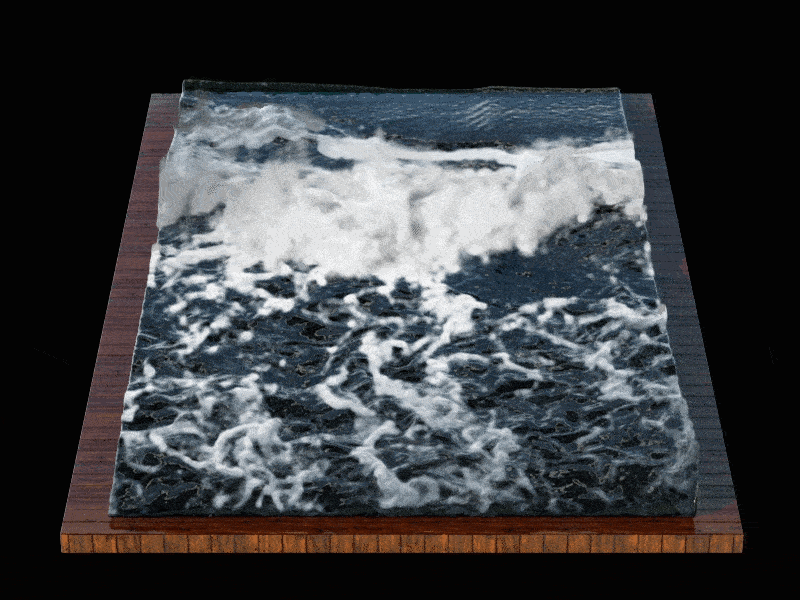When you purchase through links on our site, we may earn an affiliate commission. Here’s how it works.
What Visual Effects (VFX) Software is Used by the PROs
Visual Effects is a term used to describe digitally produced images for films, commercials, music videos, games, and many other moving media.
It is a very dynamic and vast field. The entire work of Visual Effects is not limited to a single software.
We have experienced magical worlds that only exist in the cinematic universe. We’ve seen space, we’ve seen cities get destroyed by the global phenomenon of an alien invasion.
We’ve been given a glimpse of what a zombie apocalypse could be and how to (maybe) survive it.
We’ve seen doctors’ and scientists’ experiments go wrong, unleashing this unknown creature that caused havoc in the entire world.
We’ve seen the lives and felt much closer to our beloved superheroes, all thanks to Visual Effects.
Visual Effects are the integration of actual live footage and digitally produced imagery to create an illusion of a realistic-looking environment.
Visual Effects are different from Special Effects. VFX are effects that cannot be done on set or are impossible to happen in real life.
That being said, since new worlds, superheroes, monsters, and magical powers are being created and controlled digitally through computers, something powerful might be creating it, and this is the software. Nothing will ever be made without them.
VFX can be divided into modeling, animation, shading/texturing, effects, rendering, match moving, rotoscoping and compositing.
Today, we’re going to talk about the most used software in movie production houses. All studios are different, yes, but the software they’re using revolves only around a few powerful ones.
3D MODELING
3D modeling is the creation of a three-dimensional character or object inside a simulated software. It can be made of simple shapes all the way up to complex high-polygon models.
There is five (5) software for 3D Modeling:
- Autodesk Maya
- Autodesk 3ds Max
- For 3D Modeling, Autodesk Maya and Autodesk 3ds Max have become the industry standard. Both are capable of building 3D characters, animating, rigging, creating particles and more. Both are very powerful software which also cost a very high price. Autodesk has been the leading name in 3D design, engineering and entertainment software.
- Pixologic ZBrush
- ZBrush is the industry standard for 3D Sculpting. 3D Sculpting is modeling a 3D object/character as if it was made out of clay.
- Autodesk Mudbox
- A powerful 3D Sculpting tool as well, the counterpart of ZBrush.
- Modo
ANIMATION
Animation, in all its forms, still boils down to this: a method in which shapes, characters, and objects are given life by digitally controlling them, giving them lifelike, realistic, fluid movements. In 3D Animation, there’s only one name that reigns supreme: Autodesk Maya.
Autodesk Maya is the industry standard for computer graphics. It has played a key role in the creation of Academy Award-winning films such as The Matrix, Spider-Man, Avatar, Finding Nemo, Up, Frozen, Pacific Ring, Jurassic Park, and so much more.
TEXTURE & SHADING
Texture and Shading add details to your models. Usually, what’s used in building the 3D model is the same software used for shading.
Autodesk Maya and Autodesk 3ds Max are popular shading systems.
Textures are images created through software like Foundry Mari, Substance Painter and Adobe Photoshop.
EFFECTS

Water simulation in Houdini
Simulations like smoke, fire, flood, rain and other fluid elements are these 2 supreme software: Houdini and Autodesk Maya.
Houdini is the standard for effects simulation, it’s much better at dynamic simulations compared to Maya.
Houdini is a 3D animation and special effects application built for work in 3D animation and VFX for film, TV, video games and virtual reality.
RENDERING
3D Rendering is usually the final phase of the 3D creation process. Your computer gathers the information from your scene and calculates the final result.
The output is usually a single image or a series of images compiled together.
This is usually connected with the modeling and shading software, which is responsible for the final 3D image generation.
There is three (3) software used by movie houses: Autodesk Arnold, VRay, and Pixar’s Renderman, which has been used 27 times out of 30 movies that won the Best Visual Effects Oscar.
MATCH MOVING
The process of extracting camera motion information from the film footage. There are three (3) main software. 3D Equalizer, which is the most popular and powerful, has been used since 1996. SynthEyes, and The Pixel Farm’s PFTrack.
ROTOSCOPING

Rotoscoping within Mocha
It’s an old VFX technique that’s still used to this day. It is the process of tracing over the footage, frame by frame, to be used in live-action and animated films. Silhouette and Mocha Pro are the go-to software for the pros, both have advanced tools necessary for VFX houses.
COMPOSITING
The final stage of Visual Effects. VFX Compositing is combining different elements from different sources to create an illusion that they’re all part of a single scene; this is incorporating the VFX into the live footage and blending them together to build the final shot of the film.
The software used for compositing is Nuke. (Surprise! It’s not After Effects, nope.)
Nuke is a node-based compositing software, while After Effects is layer-based. Node-based compositing gives you much greater control over your composition, and working on node-based software is much faster than layer-based.
After Effects is an amazing tool that lets you create almost any kind of animation and effects, but with compositing and how it’s built, its layered-based system is too limited for complex compositing tasks. YES, it has been used in movies alongside other software, but not as the main one for compositing.
After Effects might work for TV Commercials and films that are not visual-effects-heavy but not really ideal for huge projects.
Blackmagic Design Fusion is a less popular software for compositing but is also used by some production houses.
See Also